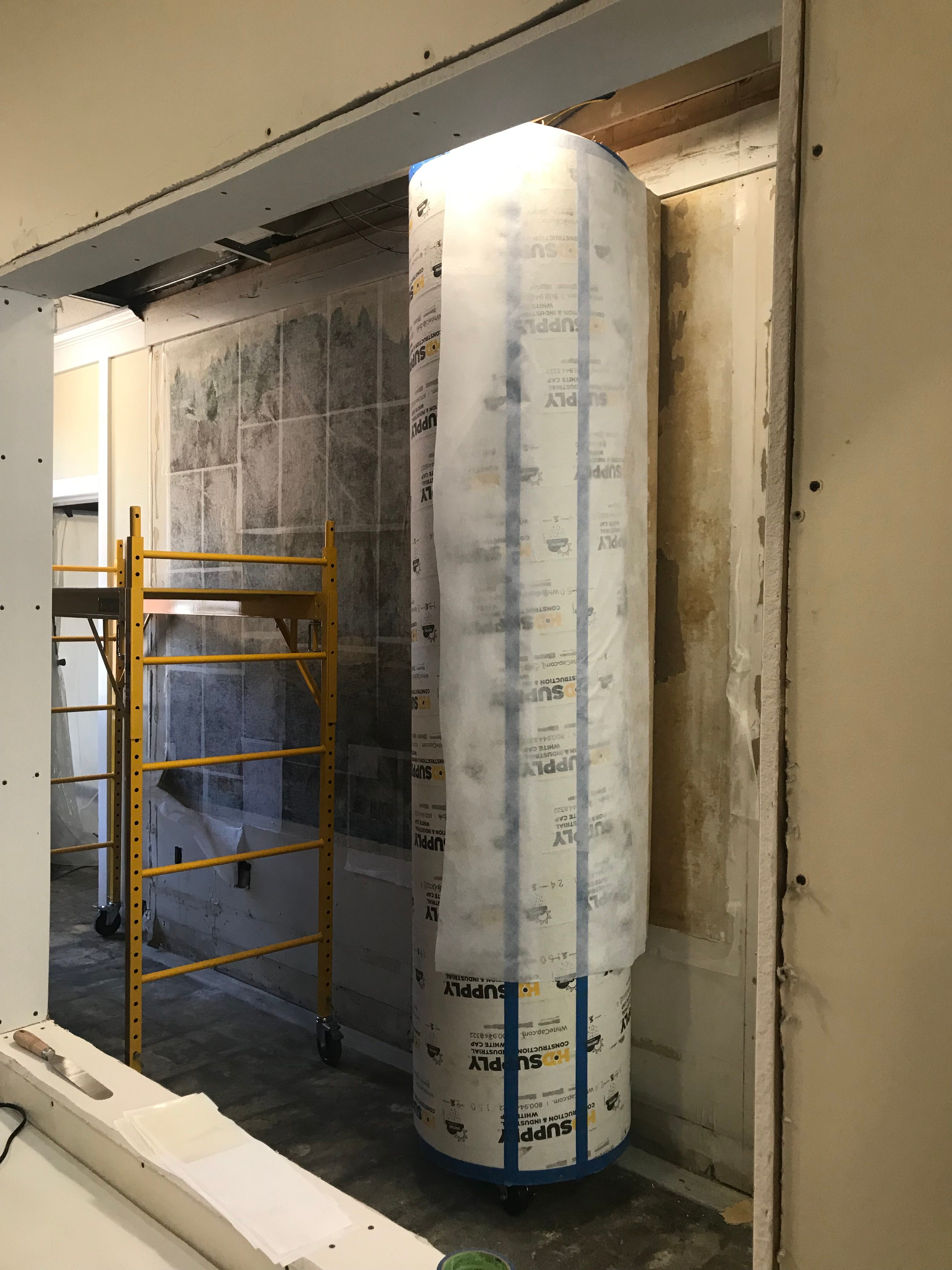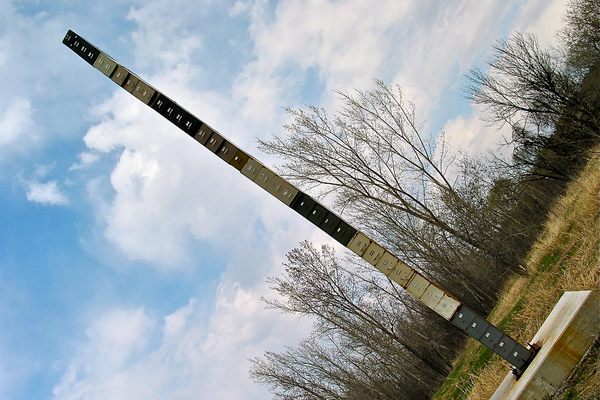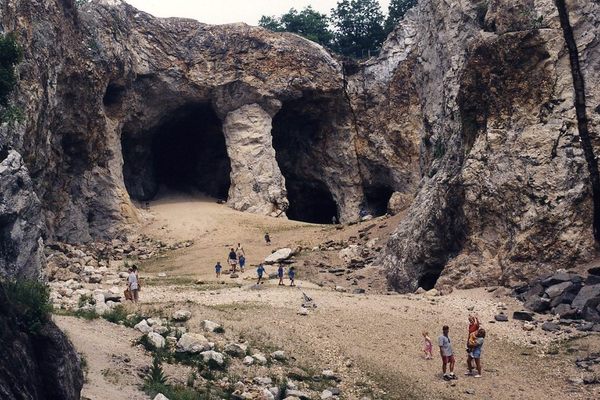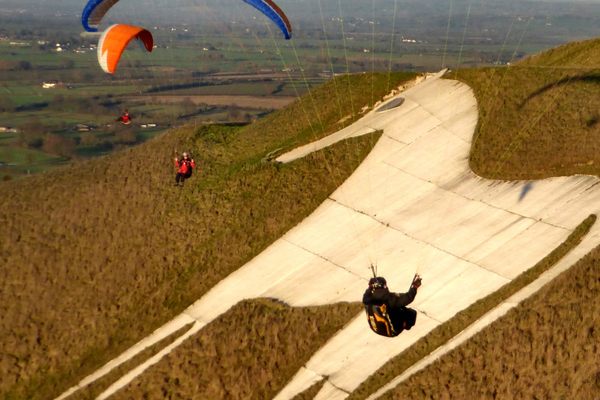An Old Painting of Vermont’s Ancient Rocks Was Hidden Behind a Wall for Decades
The 1930s depiction of Lone Rock Point has finally resurfaced.

Layers of rock generally stay fixed in place, like a hard, stratified parfait. Along fault lines, though, things may be different. In some places where the Earth’s crust is fractured, older layers of rock sometimes jut up and over younger ones. This is what’s known as a thrust fault.
One prime example of a thrust fault is Lone Rock Point, in Burlington, Vermont. There, on the eastern shore of Lake Champlain, pale limestone from the Cambrian Period sits above younger, slate-gray shale from the Ordovician Period. Researchers have suggested that the limestone is around 500 million years old, give or take, and the shale is a spry 460 million. Now, an old painting of the topsy-turvy geological formation has itself been excavated from beneath the sheetrock that obscured it for nearly 30 years.
Back in the 1930s, as part of a New Deal program to put artists to work, the painter Raymond Pease was commissioned to paint a picture of Lone Rock Point. Measuring six-and-a-half feet by nine feet, it didn’t capture all the particular detail that geologists zero in on, but it was a grand, sweeping scene—jagged rock face; swirling, sorbet-colored clouds; a bunch of handsome evergreens.


The painting—and two other panels, which have since been lost—entered the collection of the Fleming Museum at the University of Vermont before the institution winnowed its focus to fine arts and anthropology. By the mid-1960s, the painting moved to Perkins Hall, which was then the home of the school’s geology department and its own collection. At some point, somebody glued the canvas right to the wall.
When it came time to renovate the building in the 1990s, staffers had a decision to make: What should they do with the painting? They weighed their options in a letter. Ripping the painting down would surely leave the canvas in tatters, they reasoned, but wriggling it free with the help of a professional would be expensive. It could survive if the whole wall was removed, but that might compromise the surrounding supports. In the end, they opted to build another wall around the canvas, sealing it for the future. “I forgot about it,” Barry Doolan, a former chairman of the school’s geology department, recently explained to local news channel WCAX 3.

The painting resurfaced in June 2019, when construction workers peeled away a portion of the wall. Inside, they found the canvas, and the note left behind by the curator who had decided to save it. The wall was a way of “preserving the painting for someone in the future (i.e. You) to find as a sort of time capsule,” wrote Jeff Howe, then the curator of the Perkins Museum of Geology, in the note, dated August 27, 1992. “As geologists, we would all love to be able to see the changing the landscape and the peoplescape in the future,” Howe continued. “We would love to know your time as you are able to know ours, but alas, you have the advantage of hindsight over us.”

Since construction need to march along, time was of the essence. If the painting was going to survive, it had to come off. The paintings conservator Emily Phillips applied a layer of tissue paper and starch adhesive to keep the paint from flaking off as she worked, and used a spatula to carefully help break the adhesive bond of the hide glue that held the work to the wall. “It detached pretty easily and pretty uniformly,” Phillips says, and she wound it onto a roller as she worked on a bit at a time.
The long stint in hiding doesn’t seem to have been bad for the painting. “I don’t think it did any damage having it covered up,” Phillips says. “It probably prevented people from rubbing up against it.” But before it goes on view at the Perkins Museum of Geology in Delehanty Hall, where the institution has been located since 2004, it will need conservation, and to be mounted to a new stretcher support. After that, the painting will weather the coming decades in plain sight, while the prehistoric rock formation it depicts continues bearing witness to the world outside.





























Follow us on Twitter to get the latest on the world's hidden wonders.
Like us on Facebook to get the latest on the world's hidden wonders.
Follow us on Twitter Like us on Facebook